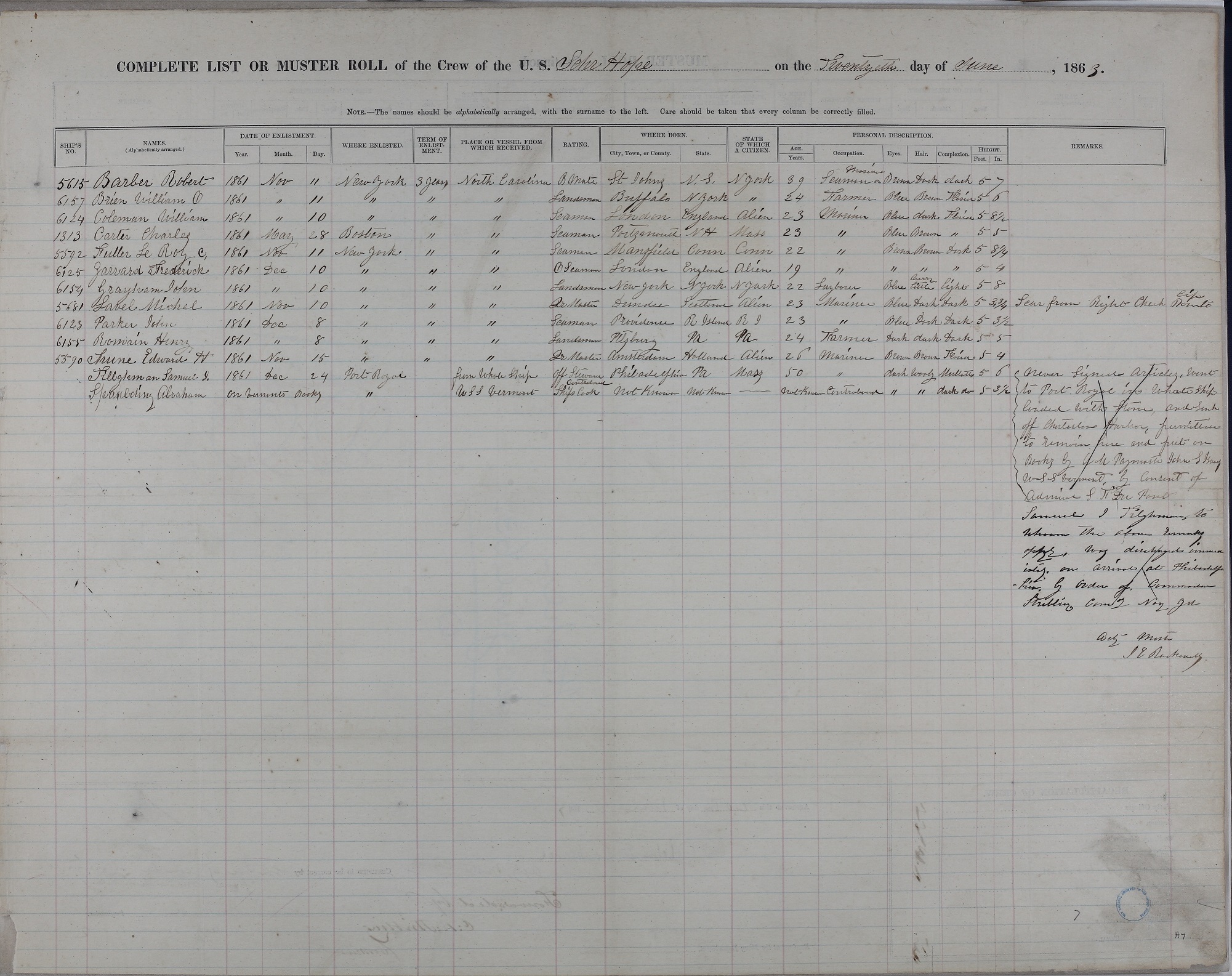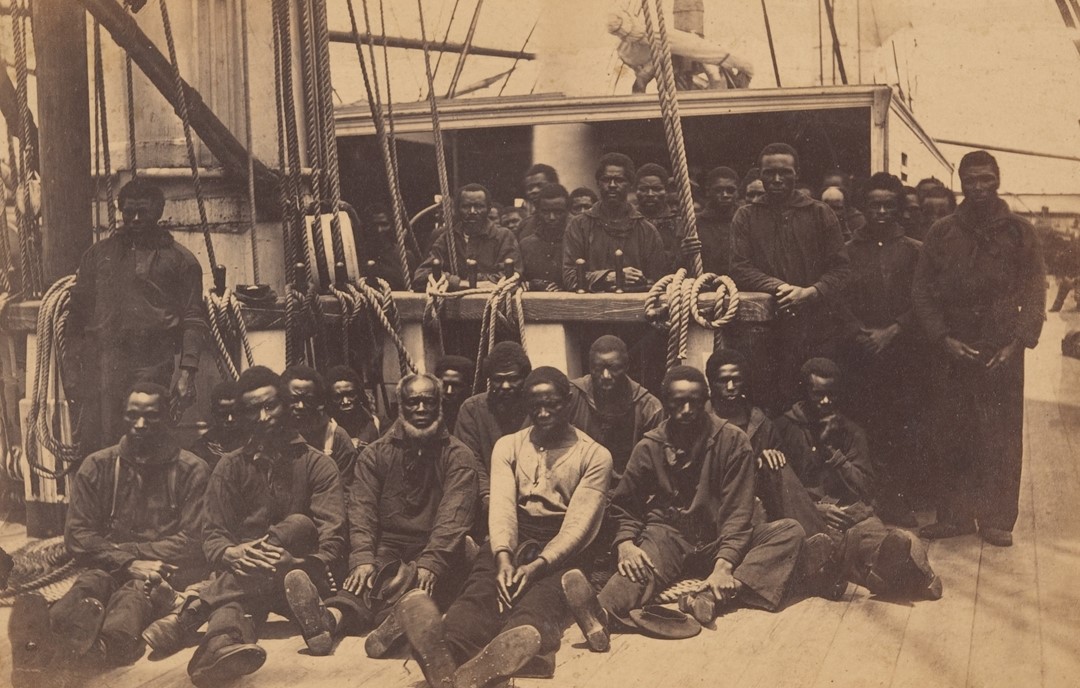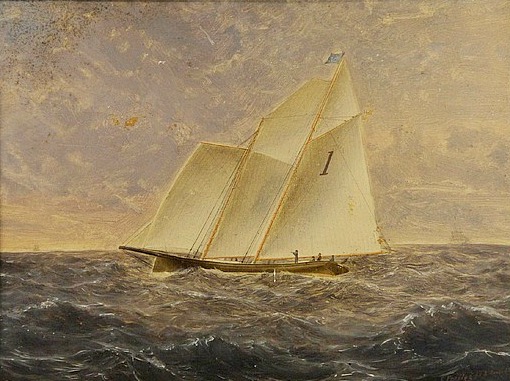In June 1863, a Union naval officer wrote on a three-foot square government form the names Samuel Tillghman and Abraham Spaulding. Each appears on the ship’s muster roll of the schooner Hope, a private yacht turned revenue cutter attached to the Union Navy’s South Atlantic Blockading Squadron. Both were African Americans, one a freeman from Philadelphia, the other a former slave, or to use the official Navy term, a “contraband.” His place and date of birth unknown.
For the last 10 years, the National Oceanic and Atmospheric Administration (NOAA) and the National Archives and Records Administration have been collaborating to make a trove of historical information and data available to the public online. Millions of pages of U.S. government ships’ logbooks, uniquely rich with weather data and international maritime history reaching back to the 1850s and earlier, have been carefully prepared, photographed and posted on the National Archives online catalog. From these pages, a virtual ocean of historical weather data are being transcribed, compiled, and analyzed by NOAA and other scientists around the world to strengthen understanding of our shared weather and climatic history.
 The latest round of this collaborative digitization effort expands the focus beyond the study of historic global weather and the operations of military and government vessels. It also includes information about enlisted crews aboard these ships. All of the U.S. Navy Muster Rolls for 1861 to 1879 (Record Group 24, Entry 132), including the names and details of enlisted crewmembers, have been digitized and posted online. This collection includes vessels of the U.S. Coast Survey (predecessor to NOAA) and the U.S. Revenue Cutter Service (precursor to the Coast Guard) that served under the Union Navy for the duration of the Civil War. For nearly every vessel that served during the Civil War and postwar Reconstruction Era, each sailor’s listing includes Name, Date/Place/Term of Enlistment, Rating, Place of Birth and Citizenship, Age and Occupation at time of Enlistment, Physical Description, and the eclectically filled “Remarks” column. Among these digitized pages is a brief glimpse into the crew of Revenue Cutter Hope, including African American crewmembers Tillghman (also written Tilghman) and Spaulding.
The latest round of this collaborative digitization effort expands the focus beyond the study of historic global weather and the operations of military and government vessels. It also includes information about enlisted crews aboard these ships. All of the U.S. Navy Muster Rolls for 1861 to 1879 (Record Group 24, Entry 132), including the names and details of enlisted crewmembers, have been digitized and posted online. This collection includes vessels of the U.S. Coast Survey (predecessor to NOAA) and the U.S. Revenue Cutter Service (precursor to the Coast Guard) that served under the Union Navy for the duration of the Civil War. For nearly every vessel that served during the Civil War and postwar Reconstruction Era, each sailor’s listing includes Name, Date/Place/Term of Enlistment, Rating, Place of Birth and Citizenship, Age and Occupation at time of Enlistment, Physical Description, and the eclectically filled “Remarks” column. Among these digitized pages is a brief glimpse into the crew of Revenue Cutter Hope, including African American crewmembers Tillghman (also written Tilghman) and Spaulding.
Both listed in the June 1863 muster roll for Hope, Tillghman and Spaulding were likely discharged or transferred by October. The commanding officer of the schooner turned revenue cutter was one of two yacht owners of the New York Yacht Club whose offer to support Union naval operations were accepted. The yachts Henrietta and Hope became revenue cutters, and their respective owners James Gordon Bennet, Jr., and Thomas Boynton Ives were each commissioned lieutenant commanders in the Revenue Cutter Service. However, by the autumn of 1863, both men had wearied of their tedious service duties and returned home with Boynton selling his yacht, which remained in government service until 1891.
Officer’s Steward Tillghman is described in the muster roll as having dark eyes, woolly hair and mulatto complexion. In 1861, he sailed south on a whaling ship loaded with a cargo of rocks. His ship was destined to be sunk as a permanent obstruction in the channel leading to Charleston Harbor, along with dozens of other aged whaling ships of the “Stone Fleet.” This operation, along with the simultaneous Union Navy capture of Port Royal, South Carolina, by the “Great Naval Expedition,” were opening salvos of the Union’s “Anaconda Plan,” a years-long effort to choke off the Rebellion by naval blockade.
In the muster roll, a mystery arises. Dated June 20, 1863, the list for Hope shows Tillghman enlisted in the Navy at Port Royal on Christmas Eve 1861, a few short weeks after its capture by Union forces. Notably, there is no term of enlistment entered--just a notation that he had come “from Whale Ship.” This would imply that he had served aboard the Hope for some time, perhaps as along as 19 months. A note in the Remarks field indicates that he never “Signed Articles” to enlist, but was allowed to remain with the crew “…by consent of Admiral S.F. Du Pont,” commander of the South Atlantic Blockading Squadron.
As a contraband, Abraham Spaulding joined Hope a different way. Transferring from the USS Vermont, the Union receiving ship stationed at Port Royal, he was the only documented contraband to join Hope’s crew. Early in the war, the Union applied the legal term “contraband” to former slaves to prohibit their return to the Confederacy where they would be returned to slavery in support of the Rebellion. Spaulding was entered on the muster roll as “Contraband - Ship’s Cook,” with the rest of the entries of “Date and Place of Enlistment,” “Place of Birth,” “Occupation,” etc., listed as “UNKNOWN.” A further hand-written note of “on (USS) VERMONT’s books,” leads one to that vessel’s muster rolls.
Upon reviewing the USS Vermont’s muster rolls, a July 1863 notation listing of scores of other contrabands, including Louis and March Spaulding, as coming from Cumberland Island, Georgia. Both in their twenties, perhaps these men were relations, possibly brothers to Abraham? Further research into this invaluable online resource may provide further clues and grist for more questions. It could also reveal the larger role of African Americans on Union Navy vessels, whether contraband or experienced seamen, as well as their role in securing Union victory and the history that unfolded thereafter.
Although no deck logs for Henrietta have been found, the task of digitizing Hope’s logs remains in the queue for future posting, along with logs from several other revenue cutters that transferred to naval operations during the Civil War. To research the pages of muster rolls of naval and other services’ digitized records, visit the archives website, scroll down and click on “Search within this Series” for a search of a particular vessel, or to browse, click on “File Units described in the catalog.” On these pages, come to life the stories of Tillghman, Spaulding, and innumerable other African Americans who participated in the Civil War, not only in the Navy, but several wartime vessels of the Revenue Cutter Service as well.